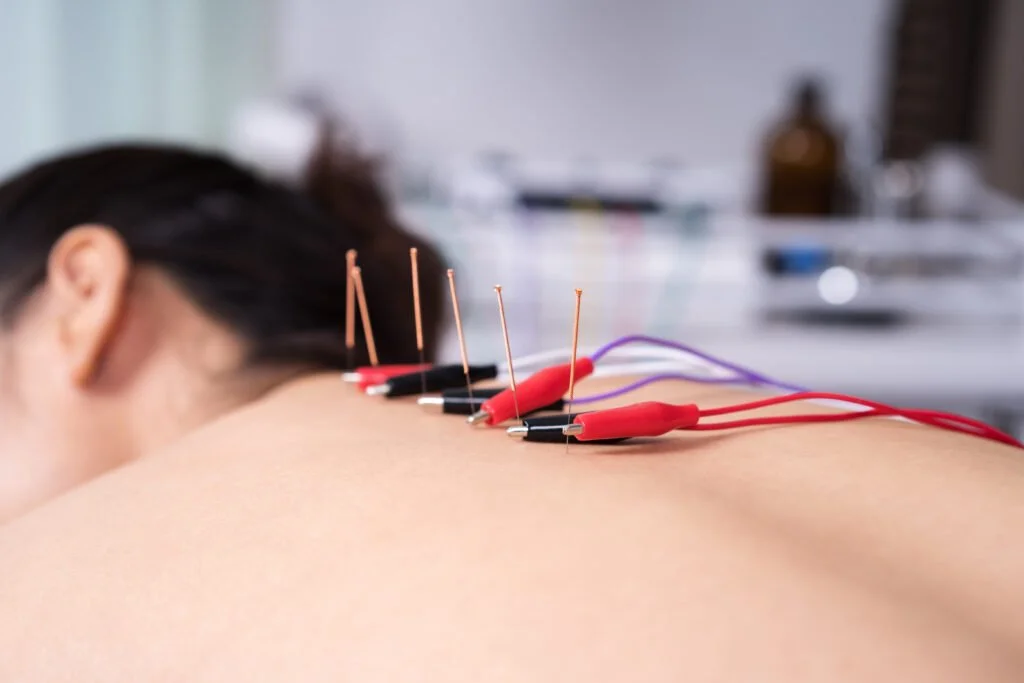Electroacupuncture: A Modern Twist on Traditional Healing
/Electroacupuncture, a contemporary adaptation of traditional acupuncture, has garnered attention for its notable therapeutic benefits. Below we'll delve into what electroacupuncture is, why it is considered effective, and explore clinical research comparing it to both traditional acupuncture and other therapies.
What is Electroacupuncture?
Electroacupuncture involves applying small clips to acupuncture needles and introducing a gentle electrical current to specific points on the body. This method enhances the traditional practice by delivering consistent and controlled electrical stimulation, enhancing the therapeutic effect.
Why is Electroacupuncture Effective?
Enhanced Stimulation
Consistency: The electrical stimulation provides a consistent level of stimulation that is difficult to achieve with manual needle manipulation alone.
Intensity Control: Practitioners can adjust the intensity and frequency of the electrical currents to suit individual patient needs.
Mechanisms of Action
Improved Blood Flow: Electroacupuncture exponentially enhances circulation and reduces inflammation, contributing to faster healing.
Nerve fiber Activation: By activating these fibers, your body releases endogenous opioids such as endorphins, which help to reduce inflammation. The activated nerve fibers may also help to reduce feelings of persistent pain.
Mesenchymal Stem Cell (MSC) Release: MSCs are adult stem cells mostly found in your bone marrow and help your body create different types of tissues. They also have healing properties.
Clinical Research: Electroacupuncture vs. Traditional Acupuncture
Pain Management
Studies have shown that electroacupuncture can be more effective than traditional acupuncture for certain types of pain. For example, research indicates that it may provide greater relief for conditions such as chronic back pain and osteoarthritis .
Neurological Disorders
Electroacupuncture has been explored in the treatment of neurological disorders, and some studies suggest it offers superior results in improving motor recovery and reducing spasticity in stroke patients compared to traditional methods, as well as reducing intensity and frequency of neuropathy.
Clinical Research: Electroacupuncture vs. Other Therapies
Comparison with Medication
In some cases, electroacupuncture has been found to be as effective as pharmaceutical interventions with fewer side effects. For example, it has been used to manage symptoms of chemotherapy-induced nausea and vomiting .
Physiotherapy
Research comparing electroacupuncture with physiotherapy for conditions like knee osteoarthritis suggests that electroacupuncture may provide comparable or even superior pain relief and functional improvement .
Combined Therapies
Some studies have investigated the combination of electroacupuncture with other treatments, such as physical therapy or pharmacotherapy, showing enhanced outcomes compared to using a single therapy alone .
Ready to try it? David Blatt, LAc, offers electroacupuncture for pain relief at his City Park location in Denver. Schedule now.
References
Vickers, A. J., & Linde, K. (2014). Acupuncture for chronic pain: Individual patient data meta-analysis. The Journal of Pain, 15(8), 857-865.
Cheng, K., & Zhou, H. (2019). Electroacupuncture in stroke rehabilitation: A review of progress. Current Opinion in Neurology, 32(6), 768-773.
Zhang, L., et al. (2018). Electroacupuncture versus ondansetron for chemotherapy-induced nausea and vomiting: A systematic review. Journal of Acupuncture and Meridian Studies, 11(2), 61-67.
Berman, B. M., et al. (2004). Effectiveness of acupuncture as adjunctive therapy in osteoarthritis of the knee: A randomized, controlled trial. Annals of Internal Medicine, 141(12), 901-910.
Wu, X., & Zhang, S. (2020). Combining electroacupuncture and physical therapy for the treatment of knee osteoarthritis: A meta-analysis. Complementary Therapies in Medicine, 52, 102451.


